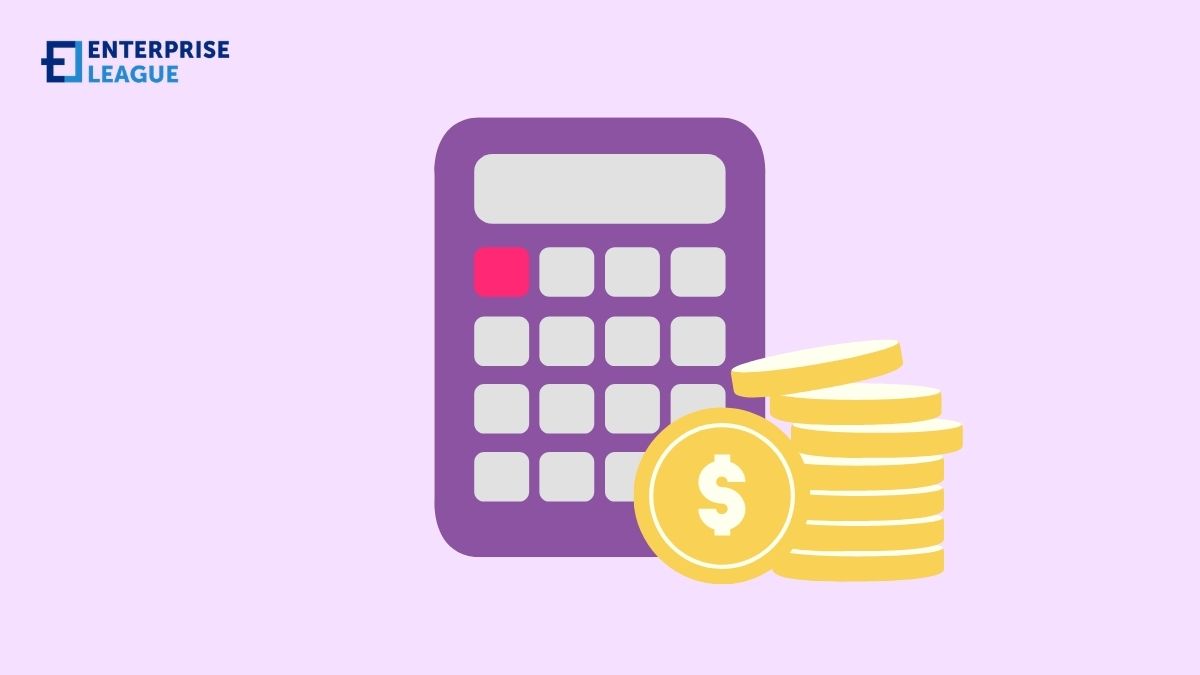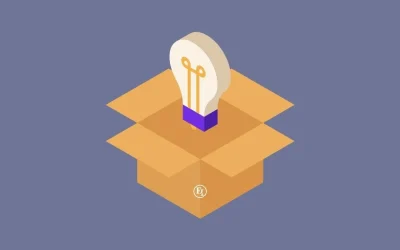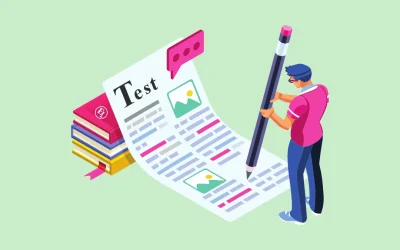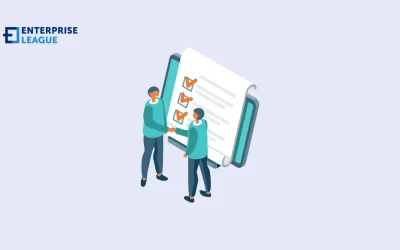Why are pricing strategies so important that we decided to dedicate a whole in-depth article to them you ask?
For starters, pricing strategies are directly responsible for increasing the sales volume or decreasing it and they also influence online sales. Why? Because they are essentially intertwined with the sales strategy plan. Not to mention that the way you price your product or service is a reflection of your brand’s reputation. And that’s just the beginning.
Therefore, without a smart pricing strategy in place, you will find yourself and your business in entrepreneurial limbo.
The Holy Trinity of product pricing strategies
All of these examples of different pricing strategies are especially helpful in unique business situations. If you are in a situation where you’re searching for ways how to finance your small businessor even when starting a new eCommerce business, you must first know how to price a product or service in order to make a profit out of it.
Knowing the in’s and out’s of the mystery that is the pricing strategy is a must, not only for new businesses but also for already established businesses that are looking for ways to enhance their efficiency and for small businesses looking for ways to become more profitable.
Competition pricing or market based pricing
If you want your company to be a leader in your industry, you must have extensive knowledge of your competitors and how they run their businesses. Just ask the entrepreneurs whose companies skyrocketed this year.
An analysis of the way in which your competitors price their products leads to you understanding their pricing strategies and making a pricing decision on your own based on that. This is why competition is really good for business. This may be lower, the same or higher than the competition, depending on how you want to differentiate and position your product. In broad terms, the elasticity of demand means that lower prices should lead to higher sales volumes; however, you will have to sell more products, which will, in turn, increase your costs.
Cost-plus pricing
This is a pricing strategy whereby you work out the production costs and add a fixed percentage markup in order to discover the selling price. For example, if a product costs £100 to manufacture and the markup is 25% then the selling price will be £125. This pricing strategy is often used in manufacturing companies.
Other product pricing strategies
Bundle pricing: Two or more products are bundled together and sold at a single price. “If you buy this, I will throw in that.”
Deadline pricing: “If you buy by the end of the month it will be £X; after that, it will be £Y.”
Dynamic pricing: Enterprises set flexible prices based on market demand.
Decoy pricing: Offer at least 3 products – 2 of which have a similar or equal price. The 2 products with similar prices are the most expensive. One of these is less attractive than the other one. Customers compare the options with similar prices. Sales of the more attractive high-priced item go up.
Freemium pricing: This is not just a pricing option, it is a business model in its own right. The way you make freemium work is by promoting a free version of a product, i.e. a smaller version or one with fewer features. The objective is to convert a proportion of the users into paying customers, who then receive the full product. Examples being MailChimp plugins and Spotify music streaming.
Geographic pricing: Different prices are offered to customers depending on where they live or happen to be. (Petrol prices!)
High-low pricing: Products are priced higher than competitors. However, promotions offer lower prices on some products, in order to gain new customers (think mortgage rates).
Loss leader pricing: A pricing strategy that attracts new customers and increases market share. The product or service is sold at or below production cost, or the cost of buying it in.
Options pricing: An extensive range of optional features are offered to a basic product. Beloved by the car manufacturing industry (…“the engine is an added extra.”)
Pay what you want pricing: The customer is allowed to pay whatever they feel is reasonable for the product or service. A ‘floor’ price may be set, or it may not be. This pricing strategy has been tried within the music industry. It can attract considerable publicity.
Payment options. Pay by cash or card? Lease the product or purchase it outright? For example, these days there are many different B2B payment solutions that small businesses can offer.
Penetration pricing: The enterprise chooses low pricing in order to boost sales and market share. If sufficient market share is attained, they may choose to increase prices. However, penetration pricing can start a price war.
Premium pricing: A high price is set in order to reflect brand exclusivity and product quality. Think Rolls Royce and Rolex watches. Interestingly, it is not just the physical product that attracts buyers (think buying experience, service and all sorts of additional touches).
Price skimming: An enterprise starts with a high price and then gradually lowers the price, in order to increase market share. The result is that profits are ‘skimmed’ from the market, over time. Usually employed when there is a clear picture of the product’s life cycle (i.e. within the software industry).
Product line pricing: Each product line (or product category) is given its own pricing. For example, budget, standard and premium product ranges.
Psychological pricing (AKA Optical pricing): This strategy just might be one of the most effective psychological marketing tactics. For example, selling a product at £4.97 or £4.99 rather than £5.00. A small change in price can make a significant difference in turnover.
Self-liquidating pricing (SLP): The objective here is to recover your costs and gain publicity and market share.
Value-based pricing: Often used by high-end software companies, the idea is to pitch the price around the products’ value to the customer, in terms of benefits received.
Yield management pricing: Yield management entails variable pricing used by airlines and hotels where they have to sell the seat in the plane / the hotel room on any given day or that opportunity has gone forever. The challenge is that two airline travelers can be sitting next to each other on a flight and discover that they have paid different prices. How would this make you feel if you had paid the higher price? (This is known as price discrimination, by the way).
Service pricing strategies
If you are wondering how to price your services, then you are in need of a service pricing strategy. A service pricing strategy can be closely related to, but not the same as all of the other pricing strategies about products. Simply put, there is a great difference in how to price your product and how to price your services.
For this purpose, we went ahead and asked other professionals to explain the best ways of how to charge customers for services.
Let’s take a look at these proven service pricing strategies.
Standard strategy
There’s a standard formula for how to price your services. Overhead and labor costs + profit you wish to earn then divide that to the total work hours. For example, you’re offering cleaning services. Add the costs of the supplies, equipment, and workforce salary. Then add the profit you would want from the different kinds of services you will offer. Then, divide the total time the service will be done.
You’ll get the hourly rate that you’d want to ask for your services. If you’ll be asking for a one-time payment for the service, just do the same thing. But this time, you’ll divide the sum by the total work hours to determine if the hourly rate is reasonable. And that’s it, now you know how to charge customers for services.
Michael Humphreys, Founder & CEO of Z Grills Australia
A step-by-step strategy
Effective pricing strategy has to start with the basics. Here are the steps and information we need to gather before determining any adjustments we do on our pricing strategy:
Market Research – You need to understand how customers perceive your business. Don’t ask yourself how much should I charge for my services until you figure out that. You won’t make money if customers are not willing to pay. There are many market research methods for small businesses, but also other resources and tools that can help your business no matter its size.
Benefits – Identify the benefits your service offers customers.
Demand – Determine the demand for your product/service.
Costing – Identify the costs for producing, distributing, and selling your product/service.
Competition – Check your competitor’s pricing and based on that make certain changes on how to charge customers for services. If you charge more than your competition, show customers the value of the unique experience your company offers.
Fair Pricing – If you quote too low, however, you risk missing out on profits, or you may even have to sacrifice the quality of work you do to meet your price. If you quote too high, there is the chance of losing a contract or client. Don’t sell yourself short and be afraid to ask for what you think you deserve.
Chris Von Wilpert, Founder of Content Mavericks
Hourly rate strategy
When working out how to charge customers for services, always look at how much you want to be earning, monthly or yearly. Say you want to earn 200k a year, that’s an average of $16,700/mth. Then break down how many hours you want to work. If you want no more than 20 hours a week, 80 a month, your hourly rate starts at $210. From there you can craft your package to reach your goals. Make sure to ask your customers upfront if the price is alright with them because you don’t want to end up with a client who refuses to pay.
But my best advice would be to always make sure you’re confident in the rate you’re asking for. If you looked at this and thought, that’s too low, raise it. If you’re not confident asking for your rate, it’ll show and you’ll struggle to sell.
Felly Day, CEO of Felly Day VA
The 10 price level strategy
I’m assuming your service resource is you, and hence your capacity is limited. Also, I think that you don’t have a considerable variable cost per sale. You could try the following three simple steps to figure out how to price your services accurately:
- Create ten price levels (bands) from the lowest (level 1) to the highest (grade 10.) Push both limits to the extreme.
- Decide on a suitable booking period, depending on how long your service takes to fulfill. You could take an average service and multiply it by 30, meaning that if your service typically takes a day to perform, your booking period becomes one month.
- Start by offering your service at price level 3, and closely monitor your capacity utilization (percentage of booking period booked.) Once utilization breaks 40%, start selling at level 4. When it fails 50%, start selling at level 5 and so on. If, after a while, you find you never get higher than level 5 or 6, then you could start selling at level 1 or 2. If you find yourself often sold out, start your booking period price at level 5 or higher.
This way, you maximize revenues and profit, similar to how airlines and hotels do. If you prefer not to keep changing the price, you could fix your price at the level which on average yields the highest revenue per available service period.
Danny Bluestone, CEO of Cyber-Duck
Conclusion
We think that by now you figured out by yourself that the pricing strategy is a key element to your Business Plan. You may offer the most exquisite service or have the best product in the market, a stellar team by your side or/and a delicately put together digital marketing strategy but at the end of the day if don’t manage to price your product/service effectively – your sales will plummet and with them, your business will too.
More must-read stories from Enterprise League:
- Don’t let the myths of entrepreneurship be in your way.
- What do successful people sacrifice in order to achieve their dreams
- Innovative customer appreciation ideas for small businesses.
- All the reasons why we should support local businesses and shop local.
Related Articles
10 business tips for beginners to help you build a healthy brand
Starting a business can be quite the challenge especially if you’re all new to entrepreneurship. These business tips for beginners will help you set off on the right foot.
SEO writing: Five foolproof tips to secure you the first page
When it comes to SEO writing it’s more guessing and less evidence about what works and what doesn’t. Luckily, we know what can really help you reach the first page.
How to onboard a new employee: Tips for quick integration
Your guide to smoother employee onboarding where you will find practical strategies that help new hires feel welcome and become productive team members faster.
10 business tips for beginners to help you build a healthy brand
Starting a business can be quite the challenge especially if you’re all new to entrepreneurship. These business tips for beginners will help you set off on the right foot.
SEO writing: Five foolproof tips to secure you the first page
When it comes to SEO writing it’s more guessing and less evidence about what works and what doesn’t. Luckily, we know what can really help you reach the first page.






